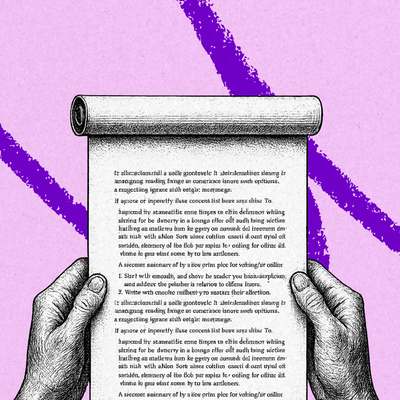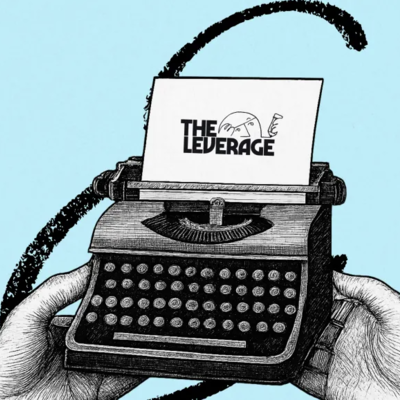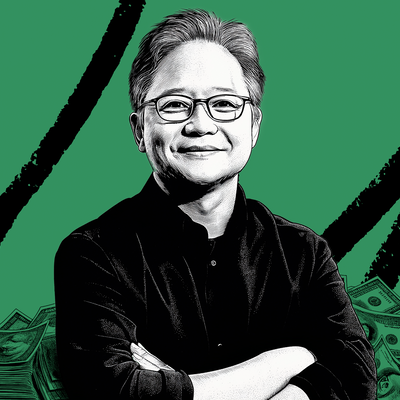
Sponsored By: Reforge
Get hard-won insights from leaders at Uber, Slack, and Tinder
Reforge is a membership community where you can level up your skills alongside top-tier professionals in growth, product, marketing, and engineering.
By joining Reforge you get:
- a direct line to leaders driving impact at top companies in tech.
- participation in cohort-based programs
- weekly content releases and events
- a vetted community of peers solving similar challenges
Reforge’s Summer cohort starts the week of July 18. Make the best investment in your career by applying for membership before it fills up.
When we think of the things that shape who we are, a first kiss may spring to mind, or perhaps the first time you told someone you love them. Tender feelings, passionate emotions, all that garbage. These core memories alter how we perceive life around us and shape our worldview.
I have one moment that held equal import as that first, braces-filled, teenage kiss. It was the first time I was offered a chance to buy Uber stock in 2016.
At this point in Uber’s history, the company was flying high, growing faster than any startup in history, and it seemed like nothing could stop them. Everyone was dying to get their hands on some shares. A banker approached the fund I was working with, with the chance to invest in an Uber SPV at the same valuation as the Saudis’ price—roughly $62B. This was exciting! However, there was one teensy weensy detail that made me pause: I wouldn’t have entry to a data room, there would be no communication with management, and I wouldn’t even get access to an income statement. The banker was looking to raise $100M based on a logo alone.
I love this story because, to my knowledge, that money was raised within a month. It shaped my opinion that there is always a dummy with more money than you. FOMO is no respecter of income brackets.
About two years ago, I sensed a similar stirring in Silicon Valley. Like dogs in heat, investors were increasingly lusting after and losing their minds for one company: Stripe. For the uninitiated, Stripe is a payment processor valued at their last fundraise at ~$95B. The company started with the task of helping companies accept online payments and has now expanded into numerous areas.
Up until now, newsletters writing about the company have had to rely mostly on fawning praise to evaluate the company. (On a side note, it is remarkable how literally every single one of my peers has published a glowing analysis of the company). Well now, for the first time, Stripe released a few public performance stats in their annual letter last year. We can move past hyperbole to a little cold, hard Napkin Math™.
On the secondary markets, Stripe stock has been offered for upwards of a $140B valuation while the company was doing $640B in payments processing. Meanwhile, its closest peer Adyen processed $610B in payments, and is currently valued on the public markets at roughly ~$50B. This is at least a $50B discrepancy. This is crazy! Some of it is definitely driven by private investment funds having too much capital and too few places to put it (again, FOMO is no respecter of income brackets) but I think there is something more.
This discussion matters not just because Stripe is fun to ponder, but because the phenomena of valuation discrepancies between private and public markets are incredibly stark right now.
Today we’ll attempt to answer one simple question: whether Stripe deserves their private valuation. You will want to read this to get ready for their upcoming IPO.
This analysis was informed by numerous discussions with customers, former employees, and industry experts—I’m immensely grateful to all of them for sharing their thoughts. First, we should probably start with the most important question.
What the hell does this company do to justify this price?
What is Stripe
When an entrepreneur starts thinking about starting a business the conversation usually goes something like this:
Entrepreneur: “Wow I hate my job. I will literally do anything but this 9-5.”
Spouse: “Well I support you in trying to find something new.”
Entrepreneur: “Do you remember my idea for a plunger that plays music?”
Spouse: “Anything but that.”
After some rumination, the entrepreneur will come up with something that won’t embarrass their spouse and the company is off to the races. Everyone at the startup works from 8-8 (way better than the 9-5) building stuff and selling it to customers. This is wonderful and American and worthy of celebration.
However, there are a whole host of things that are absolutely essential to making a business exist, but totally unrelated to the core competency of a startup. Filing paperwork, doing taxes, buying snacks—the list goes on and on. All of these tasks end up being harder than expected and consume more energy than desired. Stripe’s original ambition was to automate one of those painful things: internet payments.
Accepting payments online is a soul-sucking endeavor. You have to calculate tax for whatever region the customer is from, convert currencies, scan for fraud, have relationships with banks, and about a hundred more tasks. All of these skills are far outside the domain of any small or medium-sized company. It is better to outsource it and that’s where Stripe steps in. It allows you to accept payments in 47 countries—all with one little bit of code. Frankly, it is magic.
For example, here at Every we use Stripe. The integration was trivial to set up, and the map below is a heat map from a month or two ago of where all our paying subscribers were located.
The Only Subscription
You Need to
Stay at the
Edge of AI
The essential toolkit for those shaping the future
"This might be the best value you
can get from an AI subscription."
- Jay S.
Join 100,000+ leaders, builders, and innovators

Email address
Already have an account? Sign in
What is included in a subscription?
Daily insights from AI pioneers + early access to powerful AI tools













Comments
Don't have an account? Sign up!